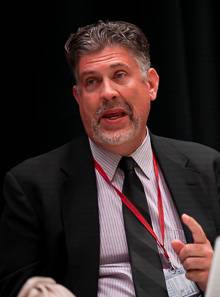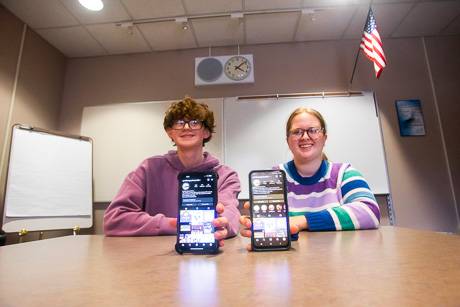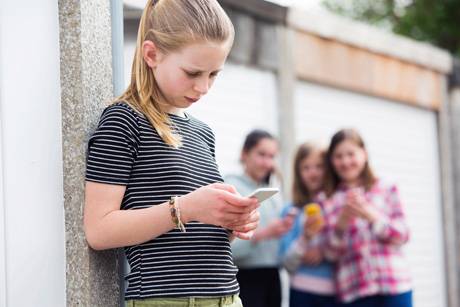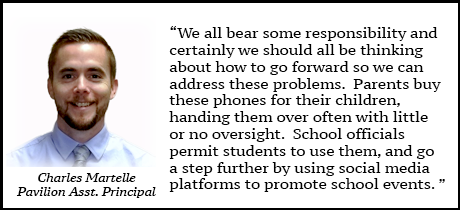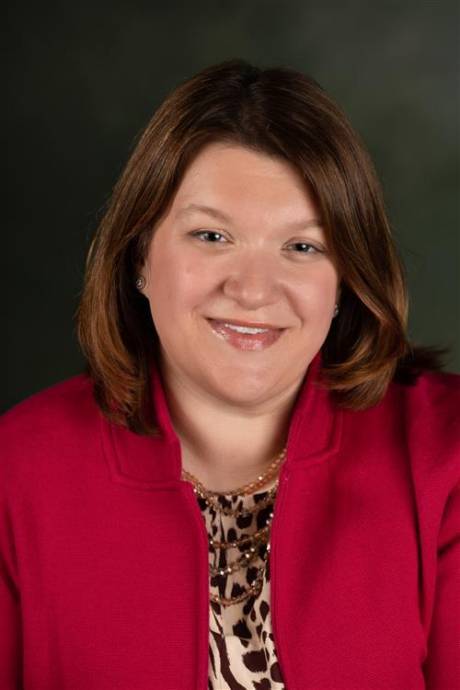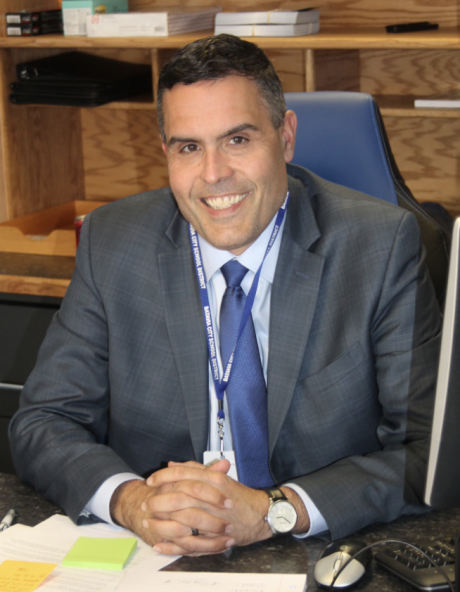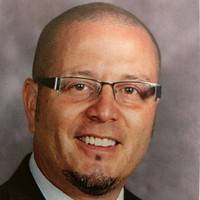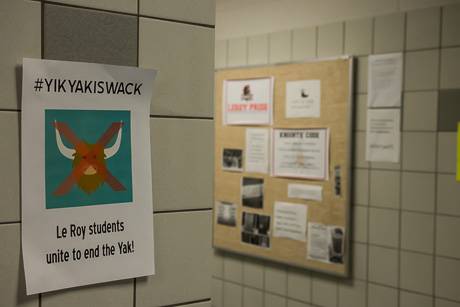Editor's Note: This is part of a series about social media use and its effects on children.
Thoughts and attempts of suicide, self-mutilation, depression, anxiety, poor self-esteem, a lack of motivation, shame, or being the giver or receiver of bullying.
It’s a tough world out there, and children are being subjected to these things more and more, especially when social media is involved, Daniel DePasquale says.
An unhealthy trend
"I'm seeing a lot of things that seem to track with a lot of the trends that have shown up in the research. So teenagers became daily users of social media, between about 2009 and 2012. And there's been a lot of research done since then, tracking different metrics of teen mental health. And what it shows pretty unequivocally is a significant increase in depression, mood disorders, anxiety, self-harm, and especially hospital visits, and ER visits for suicidality and self-harm. So that's obviously very concerning," he said.
"There’s a huge spike in 2012," DePasquale said during an interview with The Batavian Thursday. "Their lives are very online. That’s not all bad; it does foster some connections, especially for districts in smaller, rural areas. Where it goes wrong are the amounts of time spent, more than two hours a day. Most of the kids I see here are spending significantly more than that. This is stunting, certainly, really important aspects of adolescent development, especially emotional development, and social development. There's a lot of that that really needs to happen in person. And these online platforms really don't, they don't replicate what that real-life interaction is."
DePasquale is a licensed social worker at Genesee County Mental Health Services in Batavia. He and colleagues Christine Faust, a licensed mental health counselor, and Deputy Mental Health Director Peter Mittiga shared their observations and experiences on why social media use reached the extent necessary to drive families to seek counseling.
For one thing, online platforms don’t represent real life, DePasquale said. Yet, when other kids post tiny snippets of their lives, it appears as though that is their world, and it can create a false comparison.
“These are middle schools and high schools, these are where kids are kind of figuring out who they are, they're grappling with their identity for learning how to read other people's emotions, and learning how to resolve conflicts," he said. "And social media really does not provide a good healthy way to learn those things. Humans are wired to compare ourselves. Kids are posting very selective parts of their lives … very curated versions.”
Of course, that also happens amongst many adults, he said; however, kids are at an already “very fraught time in their lives” and don’t need the added pressure of having to live up to an unrealistic ideal on the Internet.
Kids are mostly gravitating towards Tik Tok and Snap Chat, while Facebook is less popular with the younger crowd, he said. Another “big issue” is cyberbullying. It has become bullying of a “very different quality than what happens in person,” DePasquale said. Once it becomes posted online for all to see, it makes it hard for kids to escape it, he said, even once they leave school and go home.
More than a fun distraction
Think social media is just an innocent extracurricular, maybe a time suck but an otherwise harmless distraction for kids? They’re being referred to therapy after being sent to the hospital for a “self-harming” incident. That could mean cutting themselves or something even more lethal. Or their issues may manifest as seemingly having no motivation to do anything and depression.
In his testimony before the Senate Judiciary Committee’s Subcommittee on Technology in May 2022, Ethical Leadership Professor Jonathan Haidt reported that social media is a “substantial contributor to the crisis” of increased loneliness at schools in all regions of the world.
“Correlational studies consistently show a link between heavy social media use and mood disorders, but the size of the relationship is disputed,” Haidt said. “Nearly all studies find a correlation, and it is usually curvilinear. That is, moving from no social media use to one or two hours a day is often not associated with an increase in poor mental health, but as usage rises to three or four hours a day, the increases in mental illness often become quite sharp.”
DePasquale believes that two hours a day is the maximum goal for usage, and it’s what he recommends to families. Beyond the emotional and mental health aspects of social media are other measurable effects, he said, including the lessening of kids’ coping skills and quality of sleep.
Social media requires “a level of sustained attention, a lot of rapid switching from different things,” he said.
Learning mindfulness skills to become more aware of their own thoughts will require new learning, such as being able to put the phone down, he said. All of that social media scrolling encourages the opposite.
"So they don't really facilitate, you know, the kind of sustained attention that you would need to, say, sit down and read a chapter of a book. And a lot of the skills that we want to teach our kids involve becoming aware of your thoughts, becoming aware of the negative thought patterns that tend to reinforce your depression or your anxiety," he said. "They also involve learning how to become more present, kind of mindfulness skills that we try to teach people, kids and adults, that also requires kind of a singular focus, being able to put the phone down, and become aware of your thoughts and feelings so that you can learn new ways of responding to them.
"And I'm finding it harder to teach some of those skills to kids, just because they don't have as much experience with that kind of sustained focus," he said.
Again, that addictive quality is not present just within the younger generation. Just look around, and there are many adults scrolling with their eyes fixed on the phone screen throughout the day and night. There is no actual addiction diagnosis for social media use, Mittiga said, but it certainly does have addictive properties.
Faust added that a committee in charge of the Diagnostic and Statistical Manual of Mental Illnesses, more commonly known as the DSM-5, will be discussing potential additions, including gaming and social media addictions. The American Psychiatric Association writes, edits, reviews and publishes the book as necessary. It was first published in 1952 and has been revised seven times since.
What does it take to get into this manual? The general consensus, Faust said, is that something falls into the addiction category when it has a drastically negative impact on someone’s life.
Faust works with all ages and specializes in children ages three and older. Even at that tender age of pre-schoolers, devices become the norm, whether it’s by watching YouTube videos, playing games on a tablet or a phone, or using the program Roblox, which allows younger kids to play a variety of games, she said.
Elementary-aged children are into Tik Tok, because “it’s silly and fun,” and Faust knows of a fourth-grader who routinely posts videos of herself on the site. A fourth-grader. Unfortunately, she gets a lot of “bullying and shaming,” as a result, Faust said.
“There are supposed to be age restrictions on these platforms,” she said. “A lot of parents are just turning a blind eye to this, or they don’t think it’s really a problem. I think a lot of kids have free rein, or even parents try to restrict them. Kids find a way around it.”
One boy was being shamed on the school bus for not owning a phone, so he took one from home to save face.
The 'dark side' of social media use
“But the other part of it is that what I see is that it's taking this group of kids who are sort of at risk, who could kind of go either way, like, they could be healthy, or they could be drawn into, you know, more risky behaviors," she said. "So it's taking those kids that are kind of on the line, and drawing them to the, quote, unquote, dark side.”
Sites like Snap Chat suck kids in like a magnet, and they get involved in group chats, teenage girls bully and shame others, and those victims are driven into serious depression, the ones “who would never think about suicide, start to contemplate suicide,” she said.
“When kids are stressed out, they’re turning to self-harm,” DePasquale said, as he and Faust filled in the lines for each other.
“And then, like Dan said, there's definitely an increase in visits to hospitals for kids who are suicidal. Or, self-harming, cutting, like it's become normalized ... when they're stressed out, and overwhelmed," Faust said.
"They're automatically thinking about suicide as a viable option,” he added.
Behaviors seem to focus more on cutting, and for girls, it can also go towards body image issues and disordered eating, Faust said, and not so much on alcohol or drug use in younger kids. DePasquale agreed that there has been a "significant shift" associated with social media use being connected to self-harm and suicidality versus substance abuse.
To the extent, they said, that "it's almost become normalized," Faust said.
"I hear kids that I work with talk about watching videos of people cutting themselves. Yeah. And posting it. They're cutting themselves and posting it," she said. "Whether it's to get attention or a cry for help. But yeah, it's definitely creating this sort of culture that is desensitizing."
By now, The Batavian has spoken to several school counselors and administrators for their thoughts on this topic, and these licensed mental health professionals concur that there are problems attached to the heavy use of social media by children.
Shining some light on the subject
Some of those districts are infusing students and staff with encouragement to form committees and teams to extract the positive out of this situation and teach about/use social media for good and/or monitor its use to be at a healthy level.
Case in point: Just this week Byron-Bergen Elementary School announced that the Genesee Valley School Board Association awarded the district with the Excellence in Student Services Award for the 3rd Grade Digital Citizenship Program. This program, which is led by third-grade teacher Colleen Hardenbrook, is a year-long initiative to develop online and computer skills in the areas of digital citizenship, digital literacy, and keyboarding. All 59 third-grade students from three classrooms participate in the Digital Citizenship Program.
Each class receives 40 to 80 minutes of Digital Citizenship per week. The curriculum is provided by Common Sense Media and focuses on safety, accountability, responsibility, and respectful use of digital media. This is broken down into themes, including media balance, privacy and security, digital footprint, relationships and communication, and media literacy.
The Batavian will be publishing stories on additional measures being taken by school districts in future articles of this series.
Imposing limits is not a bad thing
As for right now, DePasquale emphasized the time limitation to no more than two hours a day as a good rule of thumb. Faust also sees a real need for limits and boundaries, she said.
“Whatever form that comes in,” she said. “Social media is not going to go away. The trick is teaching parents about limiting what platforms they’re using. What kind of parental controls do they want to use on devices,” she said. “Parents weren’t prepared. We need to backtrack. Parents need to teach their kids at three what’s appropriate.”
DePasquale also suggests providing recommendations in layers, beginning with some fundamentals, such as using the settings in your child’s smartphone and defining a limit for only two hours of use, "right at the start."
“That also needs to be coupled with close monitoring,” he said. “And kids don’t get on social media until 16.”
Other suggestions? Parents, remove all screens from your child’s bedroom, take the phone away one hour before bedtime, and be prepared to have a list of replacement activities for that time you’ve now freed up for your child by limiting the phone.
“A lot of kids are struggling, they don’t have healthy limits. They are willing to backtrack, and are welcoming those boundaries,” Faust said. “And parents have to take more action. Some kids are learning what a good friend is, and self-esteem, confidence and getting involved in healthy activities.”
If you suspect your child is struggling with a mental health issue, check in with your school counselor or call Genesee County Mental Health Services at 585-344-1421.
For more information for parents and educators, read THIS from the Center for Humane Technology.
Top Photo Illustration. Stock photo.

